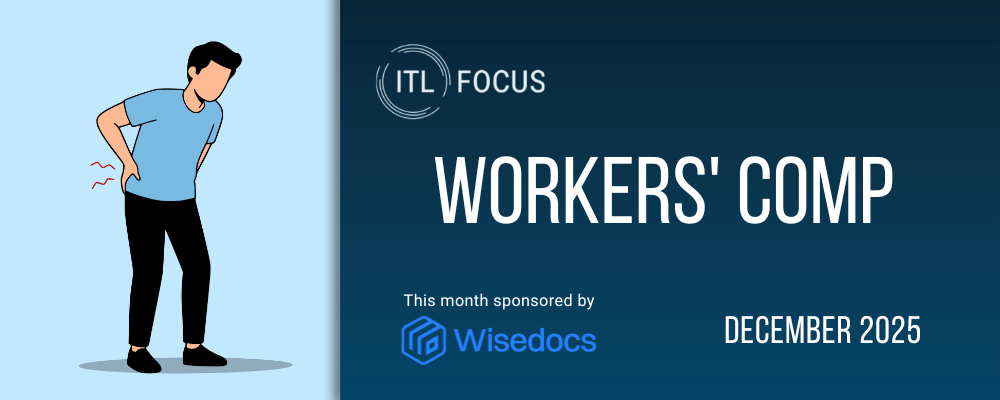ITL:
When I was preparing for this month’s ITL Focus on robotic process automation (RPA) and the broader possibilities of automation, I went back and looked and saw that two of the five most popular articles we’ve ever published on the topic were ones you’d written. I thought, I haven’t talked to Nigel in a while, not since your move to Google, so I decided to give you a try and am delighted to get to chat a bit.
Maybe we can start here: When you were writing these pieces a few years ago, it seemed that automation had great promise. Now that we’re some years on, how has that promise played out?
Nigel Walsh:
I think things have played out quite well. Division by division, process by process, things have steadily progressed. Adoption of automation within the insurance industry has increased, without question, and there are still plenty of processes left to automate.
I always talk about evolutionary and revolutionary steps. I think RPA falls categorically into the evolutionary mode. We can make everything better than it was. In the cycling world, people will know this as marginal gains. Break it all down, improve it by 1% and rebuild it all.
ITL:
What would revolution look like? And is that possible?
Walsh:
Revolution would ask, Why are we doing this in the first place? Why do we need it? Can we remove it entirely?
If you're automating a process, you’re grabbing data to fill out a form that was always used. Maybe 20 years ago that was a form on paper for an agent or broker or customer. But why automate that old form? I would challenge us to ask, “Why can't we skip the form and automate the whole process, end to end?”
Artificial intelligence has helped us understand our workflows. Think about your phone with all the shortcuts. Artificial intelligence (AI) says, actually, Paul, based on your location and the time of day and these three other factors, I know what you want to do, and I’ll get you right to it. Our ability to learn and predict quickly has improved exponentially.
ITL:
So, you can go straight from whatever is going on to whatever the result ought to be.
Walsh:
The initial achievement of automation was to make the machine go faster and be more efficient. But what if there's a new and better way to do things? I’m not sure we pause enough and ask or challenge this. You can argue that automation is still horizon one thinking when we could be looking at horizon two or three.
ITL:
Do you know the name Mike Hammer? He was an MIT professor who pioneered reengineering in the 1980s and 1990s. He used to caution against paving the cow paths because he lived with the problems that were created in Boston when city officials did just that. In the 1900s, city officials started just paving roads where cows had created paths over the centuries. He said we have to imagine the new – the superhighways or air travel or whatever – rather than just do a better job of what we’ve always done.
Walsh:
Exactly that. Otherwise, all we've done is make faster horses. As Henry Ford said, if we had asked people what they wanted, that’s what we’d have ended up with.
ITL:
Just the other day, the U.S. National Highway Transportation Safety Administration ruled that a car no longer had to have a steering wheel, gas pedal, brake pedal, etc. to meet safety criteria. So, now, we can have cars that don’t just look like they always did, without someone in the driver’s seat, but can reinvent the interior of cars entirely.
Do you have an example or two of how the more revolutionary approach might work in insurance, of what could be entirely done away with rather than simply automated?
Walsh:
We’ve been talking for years about how you move from reactive to proactive. I think we are at that point now when we have the tools and the datasets available to make that shift.
When you think about the whole process of insurance in the first place, it's the collection of data to assess risk, assign a price to it and return the assessment to the customer. But, even with all the information that is available, the orchestration is still being assigned to a human, even if it could be automated. A good example is parametric insurance. If we’re in a commodity world and there is an outage or breakage, you can automatically restore the customer to the pre-loss condition.
You can also change the business model of insurance. Look at folks like Laka, which sells insurance for cyclists. They set a cap on your premiums, but, if there are no claims or lower claims than expected, you pay less. Why don't more companies do this?
ITL:
In terms of automation of the evolutionary variety, are there particular areas where you've seen successes or have seen failures?
Walsh:
I think you can apply automation to just about any area and see benefits. It’s not hard to take your 10-stage process and automate elements of it. But automation of just the arms and legs is unlikely to give you the benefits or outcomes you really need.
ITL:
A few years ago now, I helped three senior partners at a big consulting firm write a book on how to innovate on strategy, and one of the major points they made was that operational efficiency can generate strategic advantage, even though it tends to be treated as separate from strategy discussions. They said they thought insurers should be able to take out 50% of their operating costs and rather quickly. Does that sound realistic? And, if so, how far along do you think insurance is on that trip?
Walsh:
Using Google Cloud, Ki Insurance built a Lloyd’s syndicate driven by algorithms. That’s a business traditionally grown by experienced executives, but Ki generated some $400 million in premium in its first year. A lot is possible when technology is an integral part of the business strategy.
ITL:
Thanks, Nigel. Always great talking with you.








